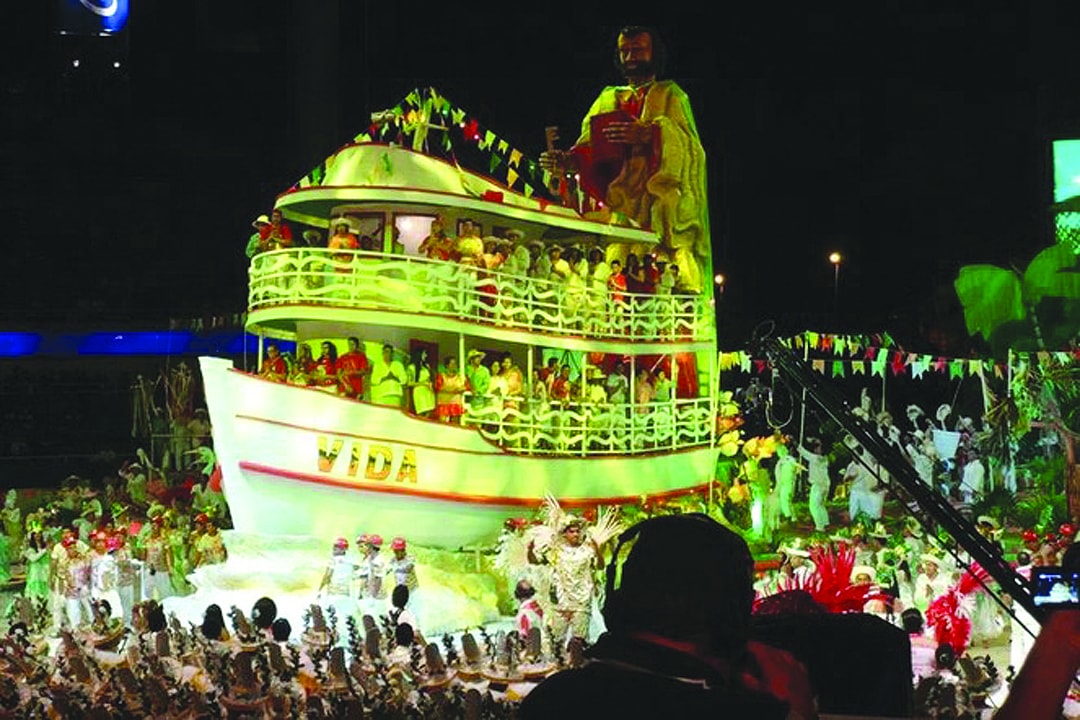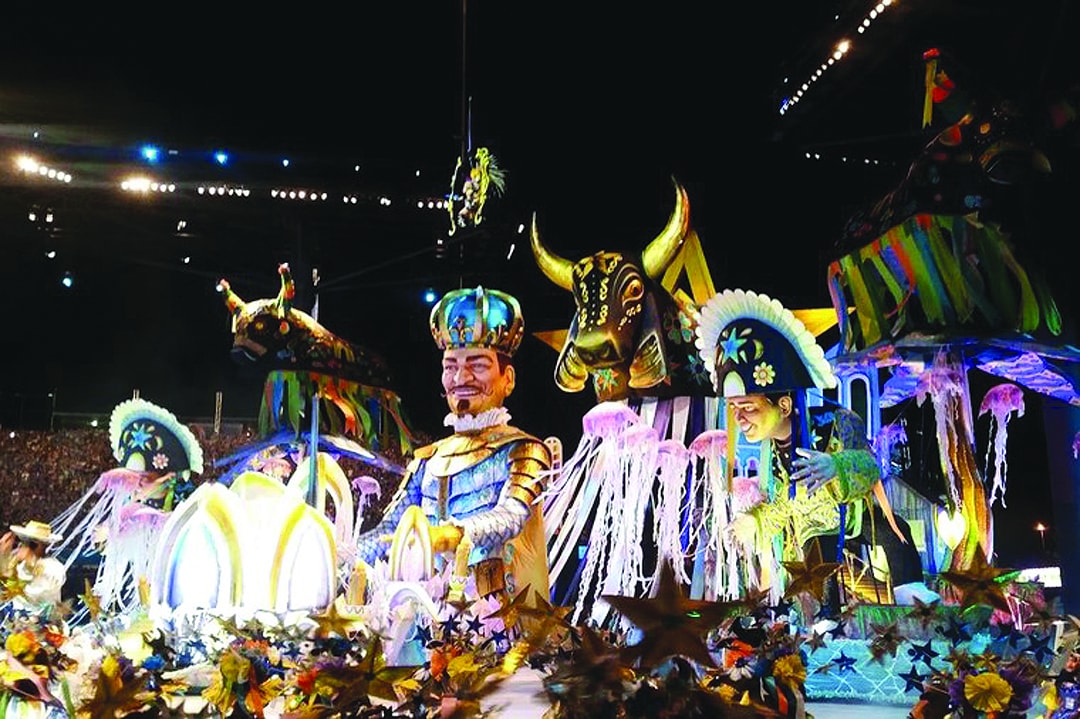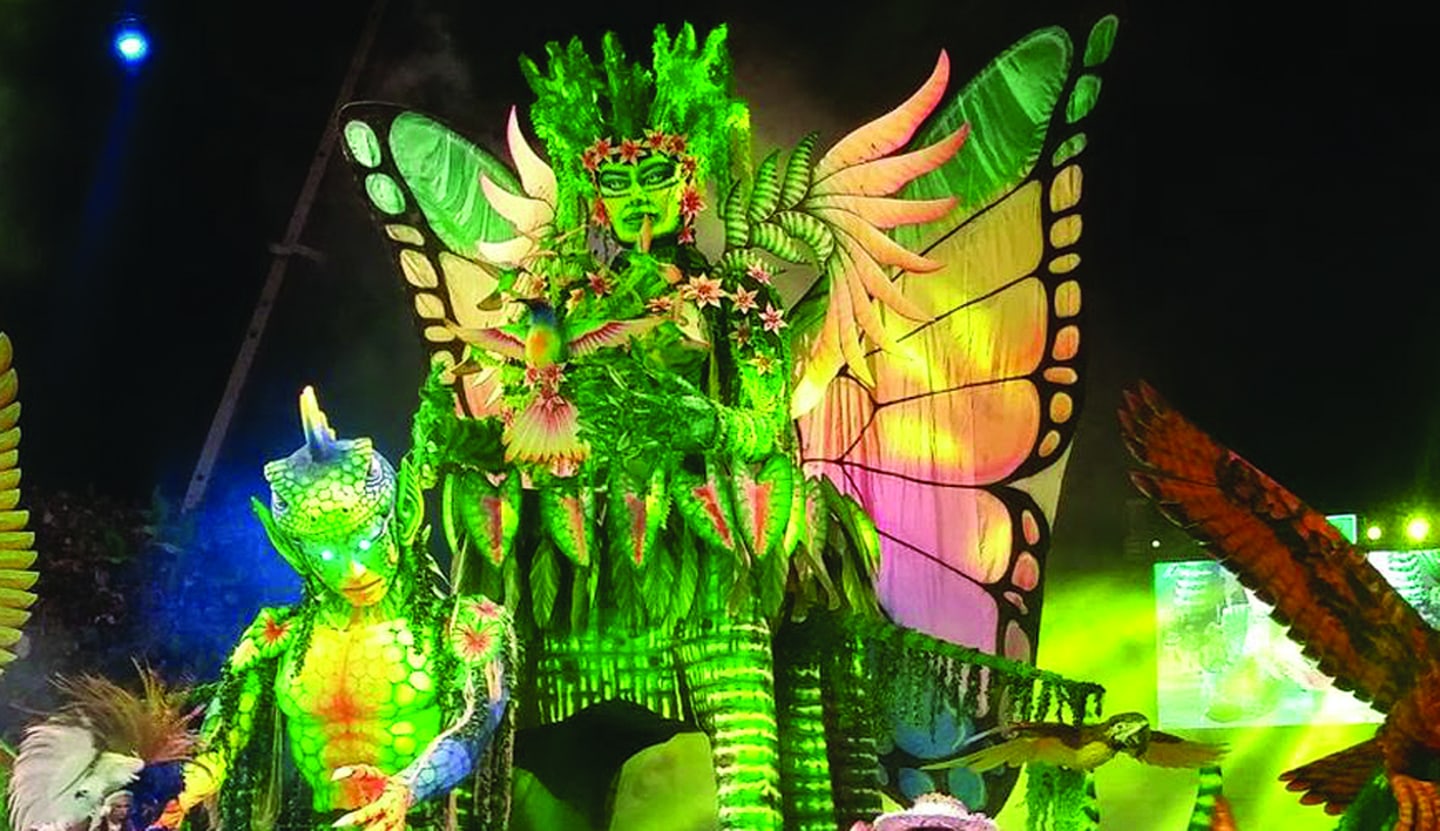Since 1965, the Manauaras reenact the legend of the boi-bumbá in the Amazon during the Parintins Folklore Festival. One of the most popular events in northern Brazil, it attracts almost 100,000 people, both locals and tourists, to celebrate regional culture. The festivities always take place on the last weekend of June and reflect a mixture of the customs of indigenous peoples and quilombolas (escaped slave and their descendants who fled to

safe havens called quilombos), both an integral part of Brazilian culture.
The Event
The festival takes place at the Amazonino Mendes Cultural and Sports Centre (better known as Bumbódromo) on an island in the middle of the Amazon rainforest called Parintins, which also gives the festival its name. During three days of celebrations, the parade goes through the Bumbódromo, a large avenue, with floats that represent Garantido and Caprichoso. The two associations (called bois, literally “oxen”) face each other in an arena through dance and music presentations, while oxen horn tunes are used to portray
indigenous rituals and riverside customs. Each presentation lasts 2h30, and is evaluated by 10 jurors on 21 different categories.
The whole city is taken over by the dispute and wears the colours of their fa-vourite boi: blue for Caprichoso, red for Garantido. In the Bumbódromo, the crowds for each one concentrate in opposite sides of the arena.
2018, more than R$ 50 million were injected into the local economy because of the event, which created five thousand di-rect and indirect jobs between June and July.

History
The legend that gave birth to the festival tells the story of Mother Catirina, who, while still pregnant, had a craving for ox tongue. However, she did not want any tongue, but rather that of the favourite ox of her husband’s boss who, was a farmer. Father Francisco, her husband, complies to her request, kills the ox but is arrested by the farmer, who had discovered everything. To resurrect the ox, the farmer summons a priest. During the festival, the priest is represented by a pajé (a shamanic figure of Brazilian tribes), who brings the ox back to life, and the festivities are the celebration of his feat.
The story is staged in acts throughout the festival by the representatives of the two associations, each in their own way. The acts also tell the story of the creation of the Amazon, addressing the many myths on the creation of the forest and themes related to the preservation of the biome.
Source: Brazil Agency



